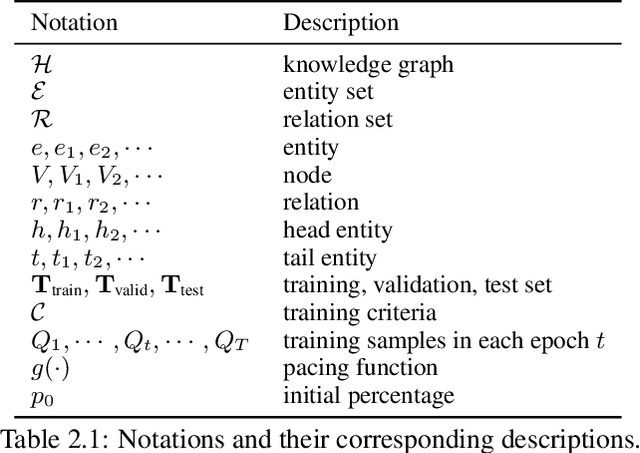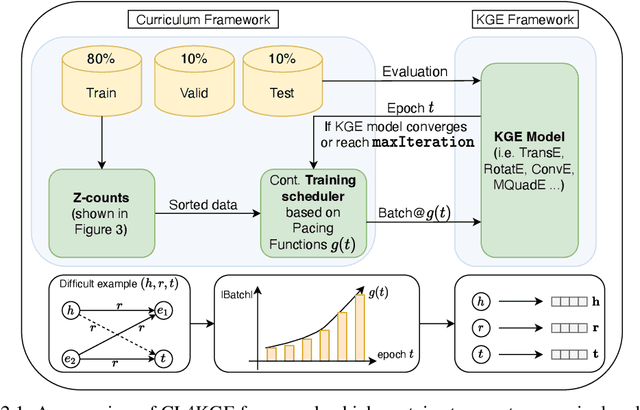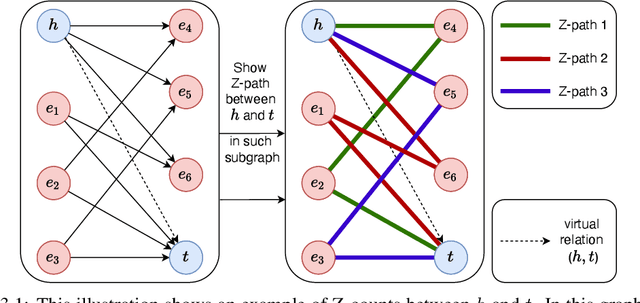Yanan Cao
NeedleInATable: Exploring Long-Context Capability of Large Language Models towards Long-Structured Tables
Apr 09, 2025Abstract:Processing structured tabular data, particularly lengthy tables, constitutes a fundamental yet challenging task for large language models (LLMs). However, existing long-context benchmarks primarily focus on unstructured text, neglecting the challenges of long and complex structured tables. To address this gap, we introduce NeedleInATable (NIAT), a novel task that treats each table cell as a "needle" and requires the model to extract the target cell under different queries. Evaluation results of mainstream LLMs on this benchmark show they lack robust long-table comprehension, often relying on superficial correlations or shortcuts for complex table understanding tasks, revealing significant limitations in processing intricate tabular data. To this end, we propose a data synthesis method to enhance models' long-table comprehension capabilities. Experimental results show that our synthesized training data significantly enhances LLMs' performance on the NIAT task, outperforming both long-context LLMs and long-table agent methods. This work advances the evaluation of LLMs' genuine long-structured table comprehension capabilities and paves the way for progress in long-context and table understanding applications.
CL4KGE: A Curriculum Learning Method for Knowledge Graph Embedding
Aug 27, 2024



Abstract:Knowledge graph embedding (KGE) constitutes a foundational task, directed towards learning representations for entities and relations within knowledge graphs (KGs), with the objective of crafting representations comprehensive enough to approximate the logical and symbolic interconnections among entities. In this paper, we define a metric Z-counts to measure the difficulty of training each triple ($<$head entity, relation, tail entity$>$) in KGs with theoretical analysis. Based on this metric, we propose \textbf{CL4KGE}, an efficient \textbf{C}urriculum \textbf{L}earning based training strategy for \textbf{KGE}. This method includes a difficulty measurer and a training scheduler that aids in the training of KGE models. Our approach possesses the flexibility to act as a plugin within a wide range of KGE models, with the added advantage of adaptability to the majority of KGs in existence. The proposed method has been evaluated on popular KGE models, and the results demonstrate that it enhances the state-of-the-art methods. The use of Z-counts as a metric has enabled the identification of challenging triples in KGs, which helps in devising effective training strategies.
A Factuality and Diversity Reconciled Decoding Method for Knowledge-Grounded Dialogue Generation
Jul 08, 2024Abstract:Grounding external knowledge can enhance the factuality of responses in dialogue generation. However, excessive emphasis on it might result in the lack of engaging and diverse expressions. Through the introduction of randomness in sampling, current approaches can increase the diversity. Nevertheless, such sampling method could undermine the factuality in dialogue generation. In this study, to discover a solution for advancing creativity without relying on questionable randomness and to subtly reconcile the factuality and diversity within the source-grounded paradigm, a novel method named DoGe is proposed. DoGe can dynamically alternate between the utilization of internal parameter knowledge and external source knowledge based on the model's factual confidence. Extensive experiments on three widely-used datasets show that DoGe can not only enhance response diversity but also maintain factuality, and it significantly surpasses other various decoding strategy baselines.
Think out Loud: Emotion Deducing Explanation in Dialogues
Jun 07, 2024Abstract:Humans convey emotions through daily dialogues, making emotion understanding a crucial step of affective intelligence. To understand emotions in dialogues, machines are asked to recognize the emotion for an utterance (Emotion Recognition in Dialogues, ERD); based on the emotion, then find causal utterances for the emotion (Emotion Cause Extraction in Dialogues, ECED). The setting of the two tasks requires first ERD and then ECED, ignoring the mutual complement between emotion and cause. To fix this, some new tasks are proposed to extract them simultaneously. Although the current research on these tasks has excellent achievements, simply identifying emotion-related factors by classification modeling lacks realizing the specific thinking process of causes stimulating the emotion in an explainable way. This thinking process especially reflected in the reasoning ability of Large Language Models (LLMs) is under-explored. To this end, we propose a new task "Emotion Deducing Explanation in Dialogues" (EDEN). EDEN recognizes emotion and causes in an explicitly thinking way. That is, models need to generate an explanation text, which first summarizes the causes; analyzes the inner activities of the speakers triggered by the causes using common sense; then guesses the emotion accordingly. To support the study of EDEN, based on the existing resources in ECED, we construct two EDEN datasets by human effort. We further evaluate different models on EDEN and find that LLMs are more competent than conventional PLMs. Besides, EDEN can help LLMs achieve better recognition of emotions and causes, which explores a new research direction of explainable emotion understanding in dialogues.
A Group Fairness Lens for Large Language Models
Dec 24, 2023Abstract:The rapid advancement of large language models has revolutionized various applications but also raised crucial concerns about their potential to perpetuate biases and unfairness when deployed in social media contexts. Evaluating LLMs' potential biases and fairness has become crucial, as existing methods rely on limited prompts focusing on just a few groups, lacking a comprehensive categorical perspective. In this paper, we propose evaluating LLM biases from a group fairness lens using a novel hierarchical schema characterizing diverse social groups. Specifically, we construct a dataset, GFair, encapsulating target-attribute combinations across multiple dimensions. In addition, we introduce statement organization, a new open-ended text generation task, to uncover complex biases in LLMs. Extensive evaluations of popular LLMs reveal inherent safety concerns. To mitigate the biases of LLM from a group fairness perspective, we pioneer a novel chain-of-thought method GF-Think to mitigate biases of LLMs from a group fairness perspective. Experimental results demonstrate its efficacy in mitigating bias in LLMs to achieve fairness.
An Empirical Study of Instruction-tuning Large Language Models in Chinese
Oct 20, 2023



Abstract:The success of ChatGPT validates the potential of large language models (LLMs) in artificial general intelligence (AGI). Subsequently, the release of LLMs has sparked the open-source community's interest in instruction-tuning, which is deemed to accelerate ChatGPT's replication process. However, research on instruction-tuning LLMs in Chinese, the world's most spoken language, is still in its early stages. Therefore, this paper makes an in-depth empirical study of instruction-tuning LLMs in Chinese, which can serve as a cookbook that provides valuable findings for effectively customizing LLMs that can better respond to Chinese instructions. Specifically, we systematically explore the impact of LLM bases, parameter-efficient methods, instruction data types, which are the three most important elements for instruction-tuning. Besides, we also conduct experiment to study the impact of other factors, e.g., chain-of-thought data and human-value alignment. We hope that this empirical study can make a modest contribution to the open Chinese version of ChatGPT. This paper will release a powerful Chinese LLMs that is comparable to ChatGLM. The code and data are available at https://github.com/PhoebusSi/Alpaca-CoT.
Multi-level Adaptive Contrastive Learning for Knowledge Internalization in Dialogue Generation
Oct 17, 2023Abstract:Knowledge-grounded dialogue generation aims to mitigate the issue of text degeneration by incorporating external knowledge to supplement the context. However, the model often fails to internalize this information into responses in a human-like manner. Instead, it simply inserts segments of the provided knowledge into generic responses. As a result, the generated responses tend to be tedious, incoherent, and in lack of interactivity which means the degeneration problem is still unsolved. In this work, we first find that such copying-style degeneration is primarily due to the weak likelihood objective, which allows the model to "cheat" the objective by merely duplicating knowledge segments in a superficial pattern matching based on overlap. To overcome this challenge, we then propose a Multi-level Adaptive Contrastive Learning (MACL) framework that dynamically samples negative examples and subsequently penalizes degeneration behaviors at both the token-level and sequence-level. Extensive experiments on the WoW dataset demonstrate the effectiveness of our approach across various pre-trained models.
Recursively Summarizing Enables Long-Term Dialogue Memory in Large Language Models
Aug 29, 2023Abstract:Most open-domain dialogue systems suffer from forgetting important information, especially in a long-term conversation. Existing works usually train the specific retriever or summarizer to obtain key information from the past, which is time-consuming and highly depends on the quality of labeled data. To alleviate this problem, we propose to recursively generate summaries/ memory using large language models (LLMs) to enhance long-term memory ability. Specifically, our method first stimulates LLMs to memorize small dialogue contexts and then recursively produce new memory using previous memory and following contexts. Finally, the LLM can easily generate a highly consistent response with the help of the latest memory. We evaluate our method using ChatGPT and text-davinci-003, and the experiments on the widely-used public dataset show that our method can generate more consistent responses in a long-context conversation. Notably, our method is a potential solution to enable the LLM to model the extremely long context. Code and scripts will be released later.
DiffusEmp: A Diffusion Model-Based Framework with Multi-Grained Control for Empathetic Response Generation
Jun 02, 2023



Abstract:Empathy is a crucial factor in open-domain conversations, which naturally shows one's caring and understanding to others. Though several methods have been proposed to generate empathetic responses, existing works often lead to monotonous empathy that refers to generic and safe expressions. In this paper, we propose to use explicit control to guide the empathy expression and design a framework DiffusEmp based on conditional diffusion language model to unify the utilization of dialogue context and attribute-oriented control signals. Specifically, communication mechanism, intent, and semantic frame are imported as multi-grained signals that control the empathy realization from coarse to fine levels. We then design a specific masking strategy to reflect the relationship between multi-grained signals and response tokens, and integrate it into the diffusion model to influence the generative process. Experimental results on a benchmark dataset EmpatheticDialogue show that our framework outperforms competitive baselines in terms of controllability, informativeness, and diversity without the loss of context-relatedness.
Divide, Conquer, and Combine: Mixture of Semantic-Independent Experts for Zero-Shot Dialogue State Tracking
Jun 01, 2023Abstract:Zero-shot transfer learning for Dialogue State Tracking (DST) helps to handle a variety of task-oriented dialogue domains without the cost of collecting in-domain data. Existing works mainly study common data- or model-level augmentation methods to enhance the generalization but fail to effectively decouple the semantics of samples, limiting the zero-shot performance of DST. In this paper, we present a simple and effective "divide, conquer and combine" solution, which explicitly disentangles the semantics of seen data, and leverages the performance and robustness with the mixture-of-experts mechanism. Specifically, we divide the seen data into semantically independent subsets and train corresponding experts, the newly unseen samples are mapped and inferred with mixture-of-experts with our designed ensemble inference. Extensive experiments on MultiWOZ2.1 upon the T5-Adapter show our schema significantly and consistently improves the zero-shot performance, achieving the SOTA on settings without external knowledge, with only 10M trainable parameters1.
 Add to Chrome
Add to Chrome Add to Firefox
Add to Firefox Add to Edge
Add to Edge